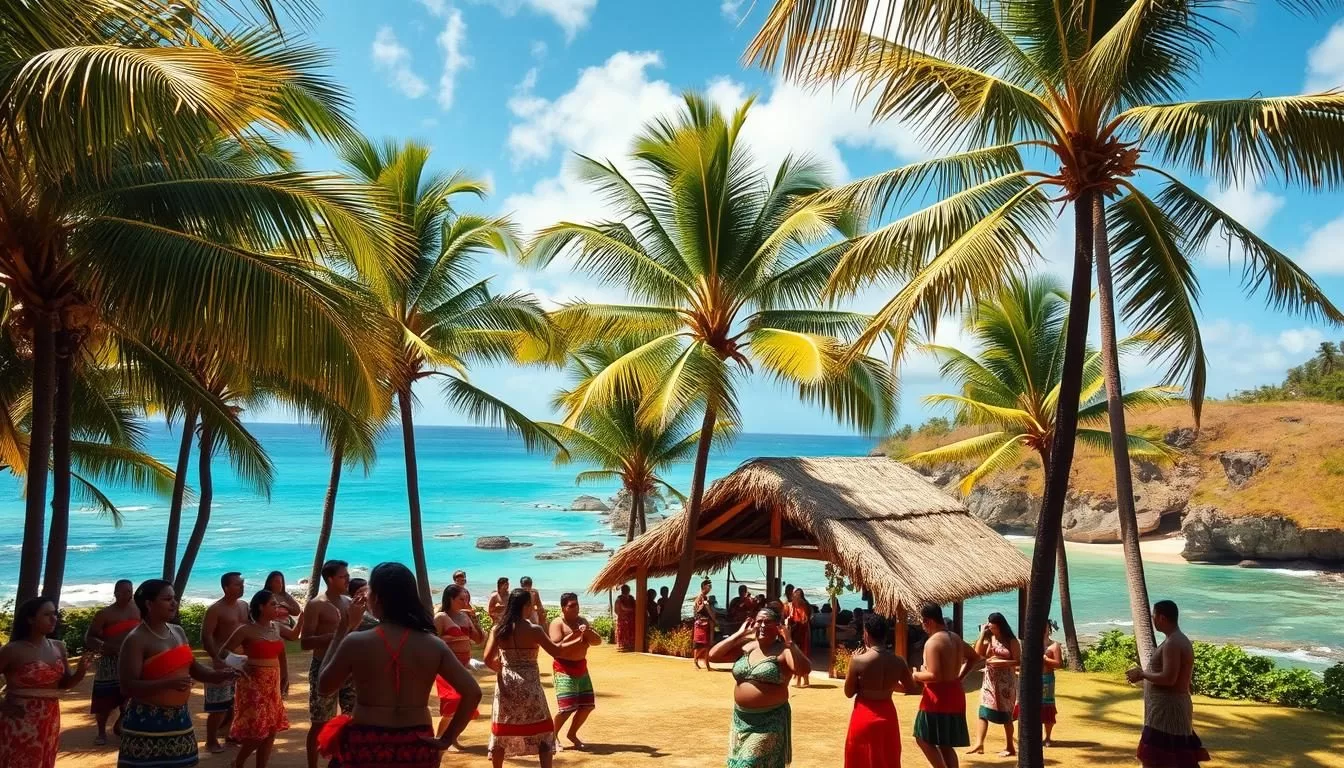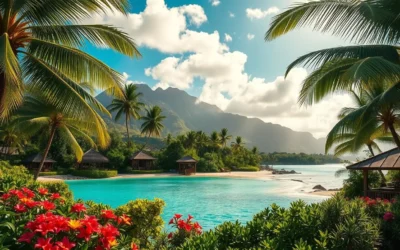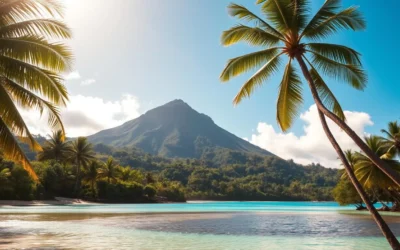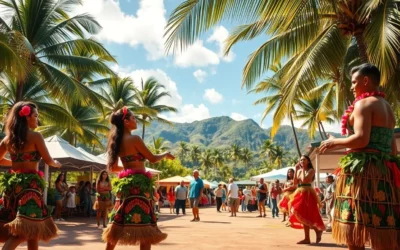✓ Accommodations✓ Flights✓ Rental Cars✓ Tours & Activities ✓ Tours & Activities
The Samoan language is a cornerstone of cultural identity in the Pacific. It’s not just a way to communicate; it’s a vibrant symbol of heritage and pride. This Polynesian tongue is spoken by native speakers across the islands, New Zealand, Australia, and the United States.
As an official language, it holds a special place in the hearts of its people. Alongside English, it’s used in daily life, education, and government. This dual-language system reflects the country’s rich history and modern global connections.
Did you know that over 510,000 people worldwide speak Samoan? In New Zealand alone, it’s the third-most spoken language, with 2.2% of the population fluent in it. This widespread use highlights its importance beyond the islands.
From its roots in the Pacific to its presence in bustling cities, the Samoan language continues to thrive. It’s more than just words; it’s a bridge between generations and cultures.
Overview of Samoa’s Linguistic Heritage
Exploring the linguistic roots of Samoa reveals a rich cultural tapestry. The language is more than a means of communication; it’s a bridge to the past and a symbol of identity. Rooted in Polynesian traditions, it has evolved over centuries, shaped by history and community practices.
Cultural Significance in Everyday Life
In daily life, the language reflects the values and traditions of its people. From family gatherings to community events, it’s a way to connect and preserve heritage. Studies show that children exposed to the language at home retain a stronger sense of cultural identity.
Events like Samoan Language Week see high participation rates, with up to 70% of communities engaging in activities. This highlights its role in fostering unity and pride. Even in places like New Zealand, the language thrives, with over 100,000 speakers keeping it alive.
Historical Context and Evolution
The history of the Samoan language dates back nearly 3,000 years. Its structure and words have been influenced by Austronesian and Polynesian roots. Over time, it has adapted to modern contexts while retaining its core essence.
For example, the language has 17 letters, with a simple yet expressive structure. This makes it accessible while preserving its unique character. Today, it continues to evolve, shaped by cultural practices and global connections.
Historical Insights into Samoan Language and Culture
The history of the Samoan language is a journey through Polynesian traditions. Rooted in the Austronesian family, it has evolved over thousands of years. This evolution reflects the resilience and adaptability of its people.
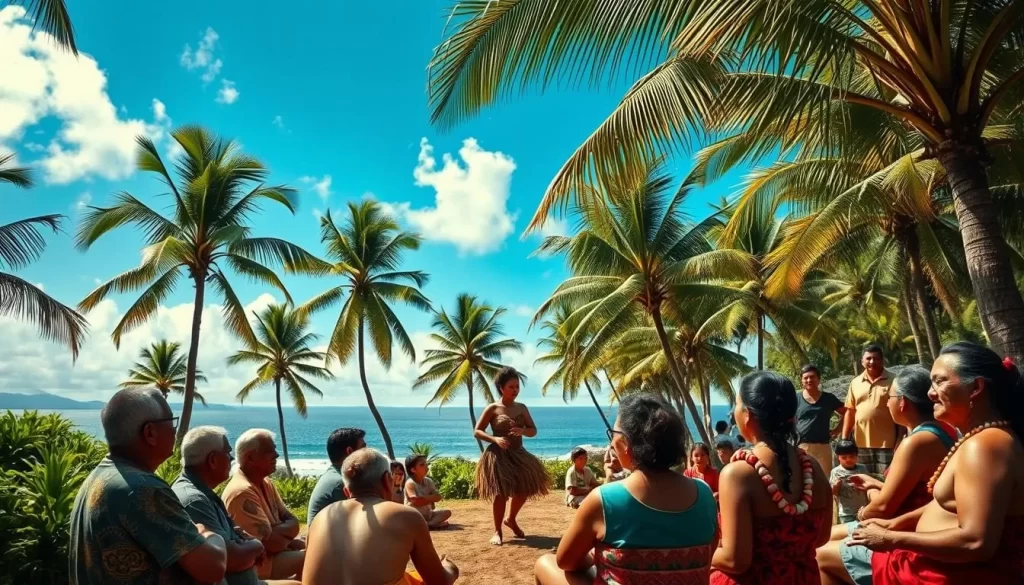
Roots in Polynesian Traditions
The Samoan language is one of the oldest Polynesian dialects. It shares close ties with Maori, Tahitian, and Hawaiian languages. Its structure and vocabulary are deeply connected to the region’s cultural practices.
For example, the language has 17 letters, making it simple yet expressive. This simplicity has helped preserve its essence while allowing it to adapt to modern contexts. The language is more than a tool for communication; it’s a bridge to the past.
Influences from Migration and Colonization
Migration and colonization have left their mark on the Samoan language. Over 60% of the population has migrated to places like the U.S. mainland and Hawaii. This movement has introduced new words and expressions, enriching the language.
Colonial encounters also played a role. European influences brought changes to vocabulary and grammar. Despite these shifts, the core of the language remains intact, a testament to its enduring legacy.
Today, the Samoan language continues to thrive, carrying the stories of its people. It’s a living connection to history, tradition, and family.
Phonological Features of the Samoan Language
Understanding the sounds of the Samoan language reveals its unique character. Its phonology includes five vowels and 14 consonants, making it simple yet expressive. These sounds are the building blocks of its structure and clarity.
Formal vs. Informal Speech Patterns
The language changes depending on the setting. In formal contexts, such as ceremonies, speech is more structured and respectful. Informal settings, like daily conversations, use a relaxed form of speech.
For example, long vowels can distinguish identical words in formal speech. This difference highlights the richness of the language and its adaptability to various situations.
Writing Systems, Accents, and Diacritics
The writing system uses a Latin-based alphabet with 15 letters. Diacritics, like the koma liliu, add clarity to pronunciation. This system ensures that the language is accessible while preserving its unique character.
In places like New Zealand, the writing system helps keep the language alive among diaspora communities. It’s a testament to the resilience and adaptability of Samoan phonology.
Samoa: Official and widely spoken languages
With its official status, Samoan bridges tradition and modernity. It’s not just a means of communication but a symbol of cultural pride. This Polynesian language is spoken by over 510,000 people worldwide, making it a vital part of the global linguistic landscape.
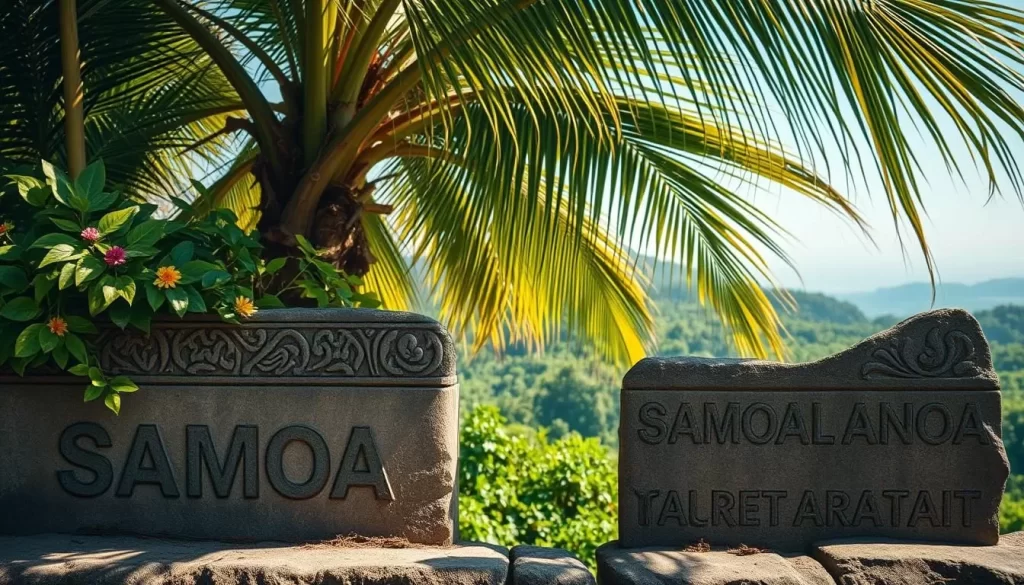
In places like New Zealand, Samoan is the third-most spoken language, with 2.2% of the population fluent in it. This widespread use highlights its importance beyond the islands. It’s a testament to the resilience and adaptability of the language.
In formal settings, specific terms are used to maintain respect and clarity. Informal conversations, however, are more relaxed and fluid. This duality showcases the language’s versatility in different contexts.
From government institutions to community gatherings, Samoan remains a unifying force. Its official language status ensures its preservation and promotes national unity. Whether in Samoa or abroad, it continues to thrive, connecting generations and cultures.
Grammatical Structure and Unique Aspects
The grammatical structure of Samoan offers a fascinating glimpse into its linguistic uniqueness. Its rules and patterns differ significantly from many other languages, making it a captivating subject for study. Let’s explore some of its standout features.
Pronouns, Articles, and Possessives
In Samoan, pronouns are divided into singular, dual, and plural forms. This system allows for precise communication about the number of people involved. For example, the word “matou” refers to a group of three or more people, while “māua” is used for two.
Articles in Samoan also play a crucial role. They indicate specificity, helping listeners understand whether a term refers to something general or particular. This feature adds depth to conversations and written texts.
Numerical Forms and Reduplication
Numerical forms in Samoan are both logical and creative. The language uses reduplication to emphasize or modify meanings. For instance, repeating a word can change its intensity or scope.
Reduplication is also common in numerical expressions. It helps clarify quantities and adds a rhythmic quality to speech. This use of repetition is a hallmark of Samoan grammar.
In places like New Zealand, these grammatical features are preserved among diaspora communities. They serve as a bridge to cultural heritage and identity.
Geographic Distribution and Global Presence
From the island to distant shores, Samoan speakers keep their culture alive. The language has a strong presence not only in its homeland but also in communities around the world. This global reach highlights its importance as a cultural bridge.
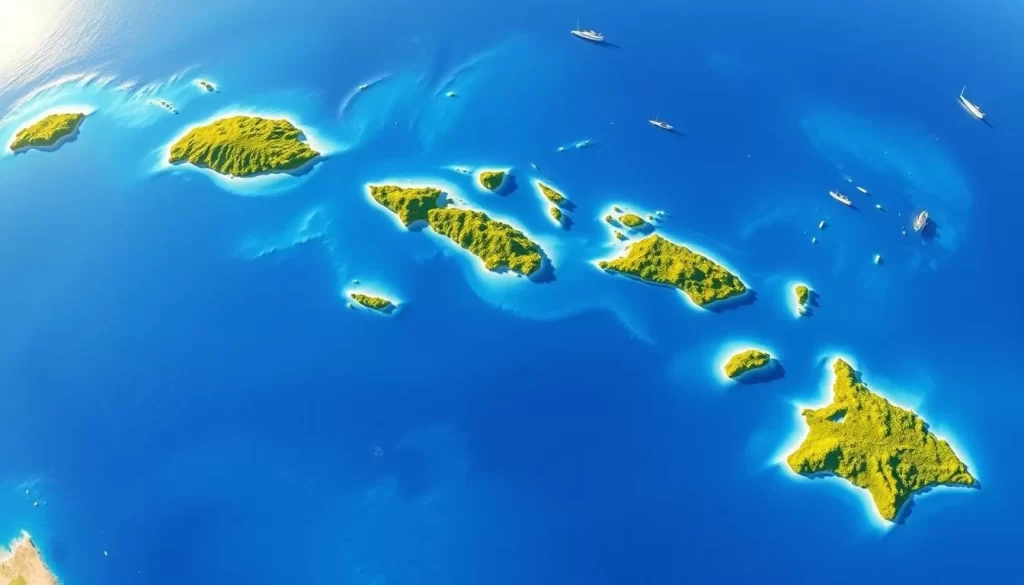
In New Zealand, over 100,000 people speak Samoan, making it the third-most spoken language in the country. Similarly, in the United States, particularly in Hawaii and California, Samoan communities thrive, preserving their linguistic heritage.
Australia also hosts a significant number of Samoan speakers. These diaspora communities play a vital role in keeping the language alive. They organize cultural events and language classes to pass it on to younger generations.
The geographic spread of the Samoan language reflects its resilience. Whether in the Pacific or across continents, it remains a cornerstone of identity. To learn more about its origins, visit this resource.
Speaker Populations in Samoa and the Diaspora
Within Samoa, nearly all residents speak the language fluently. It’s a unifying force in daily life, education, and government. Outside the islands, diaspora communities ensure its survival and growth.
For example, in New Zealand, Samoan is taught in schools and used in media. This helps maintain its relevance among younger generations. In the United States, cultural festivals celebrate the language, keeping it vibrant and alive.
These efforts show how the Samoan language transcends borders. It’s not just a means of communication but a symbol of pride and heritage for its people worldwide.
Social and Cultural Impact of Language in Samoa
Language shapes the heart of Samoan culture, connecting people to their roots. It’s more than a tool for communication; it’s a bridge to family, tradition, and community. Every word spoken carries the weight of history and the promise of continuity.
In formal events, the language takes on a respectful tone, reflecting the values of the community. From ceremonies to daily interactions, it defines the role of each person. For example, specific terms are used to address elders, showing respect and reinforcing social hierarchies.
Within the family, the language is a way to pass down stories and values. It’s a living connection to ancestors, ensuring that tradition remains alive. In places like New Zealand, diaspora communities use it to maintain their cultural identity.
Shared roles within the community are also defined through language. Whether it’s a man leading a ceremony or a person contributing to a communal task, words guide actions. This dynamic fosters unity and respect, ensuring that everyone plays their part.
Language in Education and Media
Education and media play a vital role in preserving the Samoan language. Schools and broadcasts actively promote its use, ensuring it remains a cornerstone of cultural identity. Programs focus on teaching traditional word forms and grammar, helping younger generations connect with their heritage.
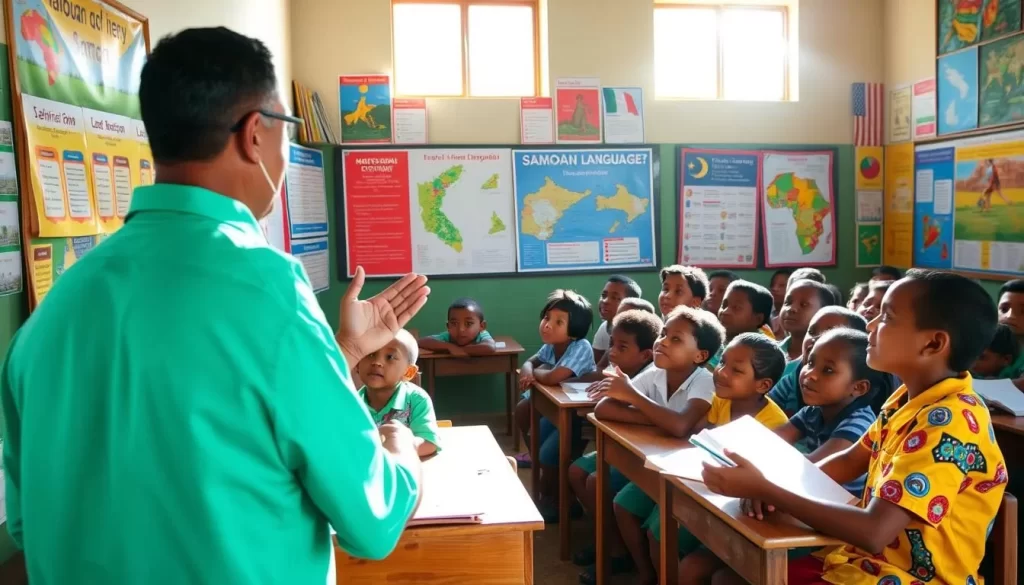
In schools, the language is integrated into curricula from an early age. For example, it’s the medium of instruction in primary schools up to Year 6. This approach helps students develop fluency while learning about their cultural roots. English is introduced later, ensuring a balanced bilingual education.
Media outlets also contribute significantly. Radio and television programs broadcast in Samoan, reaching a wide audience. These platforms reinforce national pride and cultural heritage. For instance, government-supported language weeks in New Zealand and Samoa celebrate its importance.
“The integration of Samoan in education and media ensures its survival and growth, connecting generations.”
Here’s a quick overview of Samoan language initiatives in education and media:
| Initiative | Impact |
|---|---|
| Primary School Curriculum | Teaches Samoan as the medium of instruction up to Year 6. |
| Media Broadcasts | Promotes the language through radio and TV programs. |
| Language Weeks | Celebrates Samoan culture and language annually. |
These efforts highlight the resilience of the Samoan language. They ensure it thrives not only in its homeland but also in diaspora communities.
Preserving and Promoting Samoan Linguistic Traditions
Efforts to preserve Samoan linguistic traditions highlight the importance of cultural continuity. From community events to government programs, these initiatives ensure the language remains vibrant and relevant. They also reinforce the connection between generations, keeping tradition alive.
Community Initiatives and Cultural Events
Community-driven events play a key role in promoting the language. For example, Samoan Language Week sees high participation rates, with activities that celebrate its use and cultural significance. These events foster pride and unity among participants.
In New Zealand, festivals and workshops help diaspora communities stay connected to their roots. These gatherings often include traditional storytelling, music, and dance, showcasing the structure and beauty of the language.
Government and Educational Efforts
Government policies and educational programs also contribute to preservation. Schools integrate the language into their curricula, ensuring younger generations learn its traditional forms. This approach helps maintain its relevance in modern contexts.
UNESCO-supported initiatives, like the “Samoa Ne’i Galo” project, document oral traditions and legends. These efforts provide a valuable reference for future generations.
| Initiative | Impact |
|---|---|
| Samoan Language Week | Promotes cultural pride and language use. |
| School Curricula | Teaches traditional language forms to students. |
| UNESCO Projects | Documents oral traditions for future reference. |
Collaborative efforts between communities and institutions ensure the language thrives. To learn more about these initiatives, visit Samoan Language Week.
Conclusion
The Samoan language serves as a vital link between generations and cultures. It bridges the past with the present, uniting communities across islands and continents. Its unique structure and formal vs. informal usage highlight its adaptability and richness.
Within the family, it strengthens bonds and preserves traditions. In communities, it fosters unity and respect. Its global presence, especially in the United States and New Zealand, showcases its enduring relevance.
Efforts to preserve this language ensure it remains a cornerstone of identity. Whether in daily life or cultural events, it continues to thrive.
The above is subject to change.
Check back often to TRAVEL.COM for the latest travel tips and deals.
